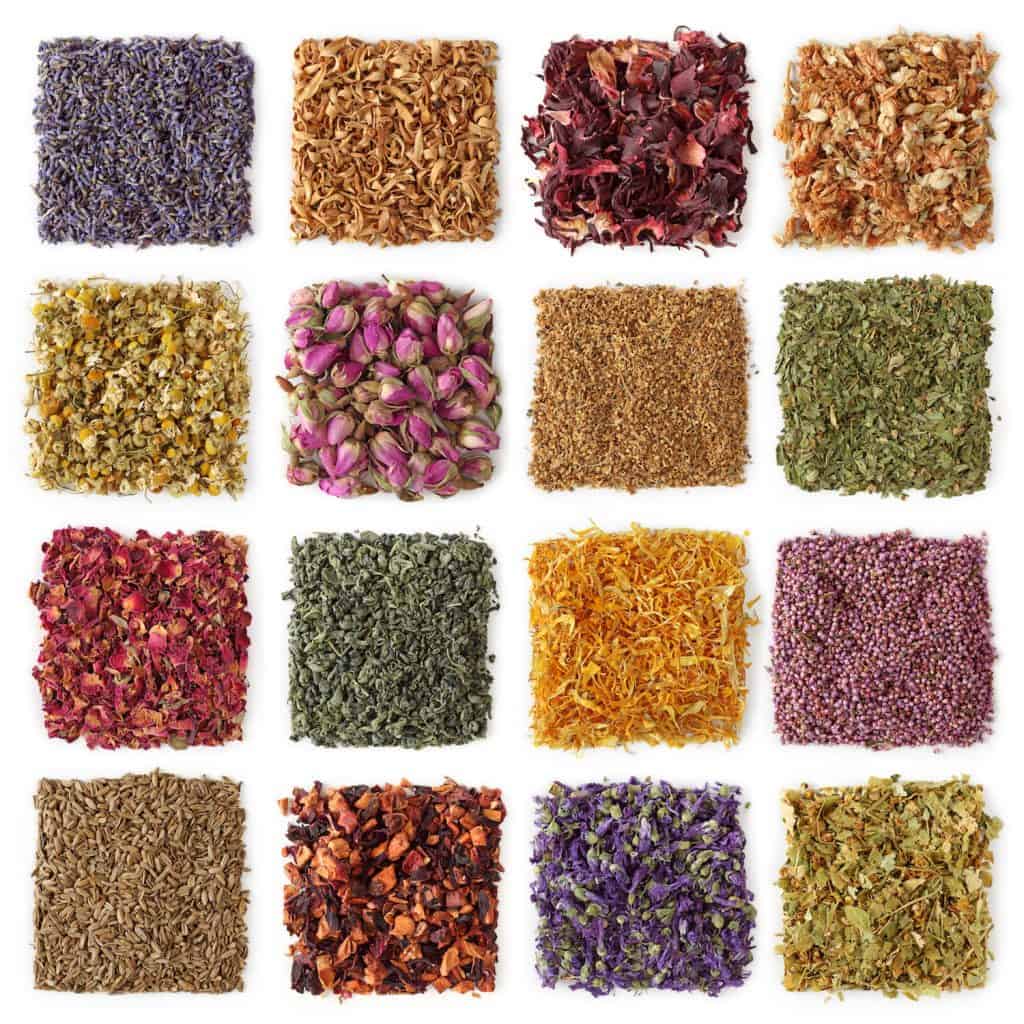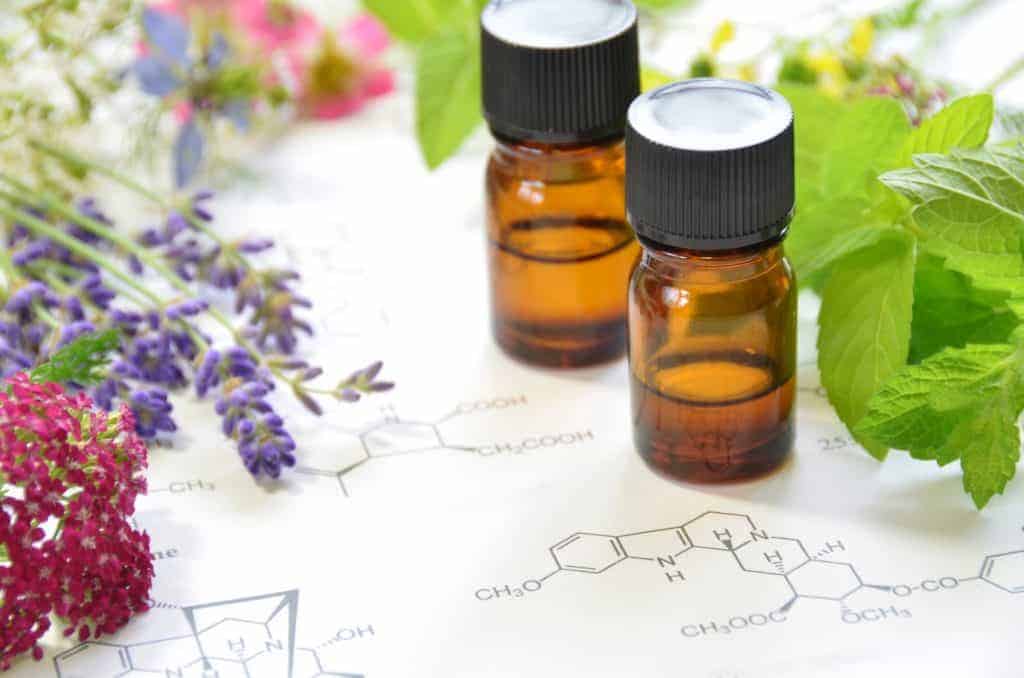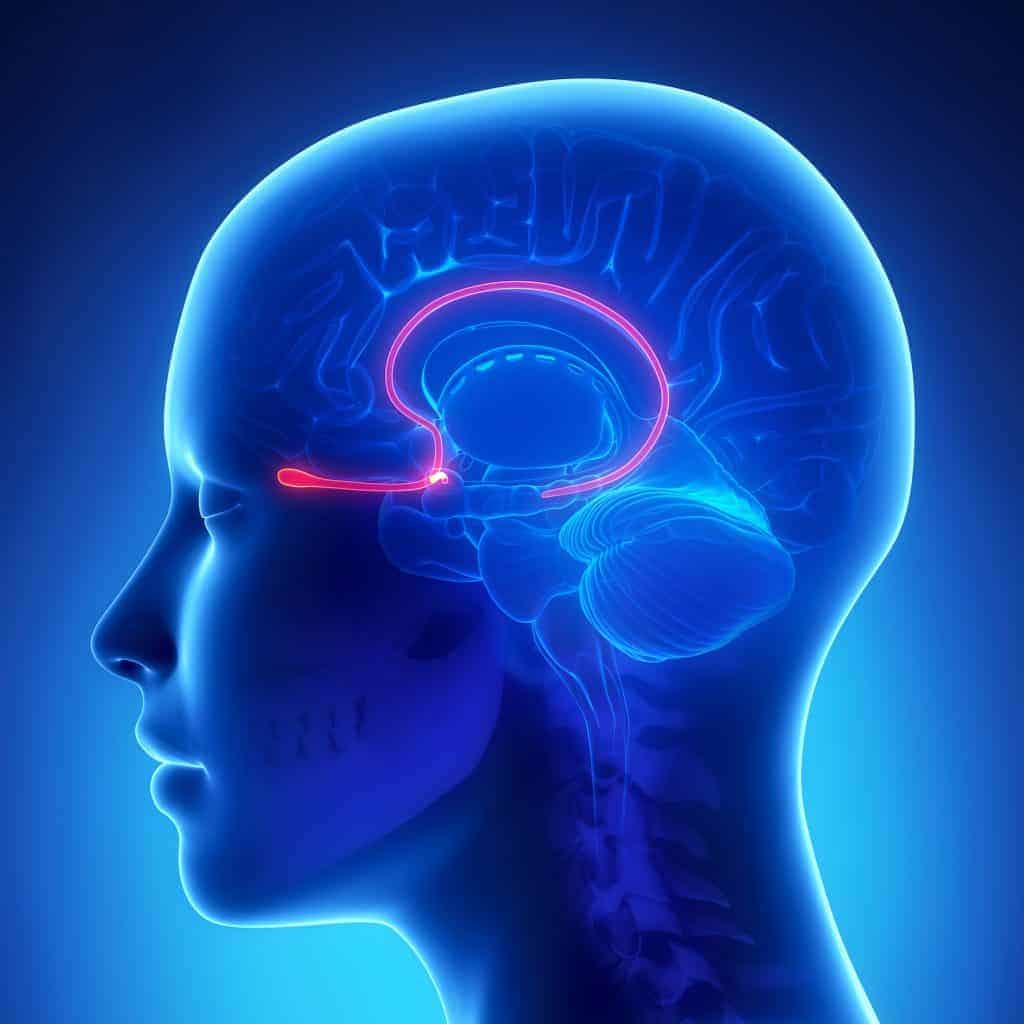There’s a certain buzz word you may have heard around the spa. Perhaps you’ve seen it brandished on perfume labels and bottles of soap? Maybe your crazy hippie friend has been ranting and raving about it? That word is “aromatherapy.” Ah, ring a bell? You hear it so much that you probably brush it off as another marketing ploy or just a fancy way to say something smells really nice. However, aromatherapy is much more than that. It is a therapeutic practice that uses our sense of smell to promote an overall sense of well-being through the use of volatile plant oils. There is a science to the efficacy of aromatherapy, and we are going to break down just how it works!

So What Exactly IS Aromatherapy?
To understand aromatherapy better, it is important to know where it comes from. Aromatherapy has been used for cosmetic, therapeutic, and spiritual purposes dating back over 6,000 years. The Chinese burned incense to promote harmony and balance. Egyptians distilled oils from cedarwood to embalm the dead. By the 15th century, Greeks were using plants and herbs in various healing processes.
In 1937, French chemist René-Maurice Gattefossé finally coined the term that has the world buzzing today. In his book entitled Aromatherapie, (fancy, right?) the chemist wrote in detail about his discovery of the healing potential of aromas. Following a chemical explosion while creating a perfume, Gattefossé’s hand developed a gas gangrene. This would have proven to be fatal. He looked for the closest liquid to immerse his burning hand, and much to his delight he stuck his fiery limb in lavender oil. As Gattefossé penned in the first book specifically written on this topic, “Just one rinse with lavender essence stopped ‘the gasification of the tissue.’ This treatment was followed by profuse sweating, and healing began the next day (July 1910).”
How Do Essential Oils Get Their Aroma?
Aroma is a by-product in the evolution of plants. In order to ensure their survival, plants have developed terpenes. Terpenes are what create the essence of a plant. Aromas that are concentrated in areas like their bark, roots, or leaves have a tendency to repel predators. However, plants also developed pleasing fragrances in their fruits and flowers that would attract pollinators. From the seeds, to the leaves, to the flowers, everything that involves the creation of a plant has unique chemical compounds. These compounds are what make up the chemical properties of the plant’s essential oils.

The essential oils of plants are extracted by using either steam or pressure. During these processes, cell membranes are ruptured, allowing their aromatic oils to be released and then collected. The compounds of each essential oil are so unique, that the process varies for each individual plant. It is important to use organically grown plants because during the extraction process you are condensing all the chemicals contained within the plant material. The use of pesticides in the harvesting of plants may cloud the purity of the final product. Non-organically sourced plants may have traces of pesticide residue inside their essential oils, which is further concentrated through the extraction process.
The use of nontoxic, organic versus chemical fertilizer is one of the many ways that the chemistry of essential oils may be affected. Other factors that may influence the chemical constituents of essential oils include climate, altitude, how the oil was distilled, and how the final product was bottled. Two plants may be identical botanically, but their chemical constituents may be altered due to the aforementioned factors.
What Affects the Chemistry of Essential Oils?
Chemotypes
Using two processes that we implement, gas chromatography and mass spectrometry, the chemotypes of plants are determined. Chemotypes are unique qualities to that particular plant that have chemical markers, the result of environmental factors such as the pH of the soil.
The chemotype can affect the safety and therapeutic uses of essential oils. Take rosemary for example. There are three distinct CT chemotypes of this piney herb. Rosmarinus officinalis ct. 1,8-cineole is used to aide in reducing excess mucous, alleviating respiratory issues. Whereas, Rosmarinus officinalis ct. camphor has been noted for helping muscular aches and pains. A third chemotype is the most versatile of these three rosemary chemotypes. Rosmarinus officinalis ct. verbenone regenerates skin cells and may enhance liver function. It also has less stimulatory side effects than the other two, so this particular chemotype is more suitable for nighttime use.

Chemical Constituents
As each essential oil may have specific chemotypes, they also have individual chemical constituents. Essential oils are typically composed of either terpene hydrocarbon or oxygenated compounds. If that isn’t specific enough, they are then broken off into more distinct subgroups. These subgroups inevitably distinguish the characteristics of each particular essential oil. When determining which oil to use when relieving any ailments, it is useful to take these characteristics into consideration.
- Terpene Hydrocarbons
First we will start with the subgroups for terpene hydrocarbons because there are two and that’s easier. Terpene hydrocarbons are named as such because they are what give essential oils their aromatic properties. Remember way back when we told you that terpenes create the odor that either attracts pollinators or repels predators? Cue Rafiki. It’s the circle of life!
Hydrocarbons are chemical compounds that only contain hydrogen and carbon. I know. And they say rocket science is hard or something. A pure hydrocarbon has no aroma. Aroma comes from the hard work of a delocalized electron inside carbon atoms.
Carbon atoms contain four electrons. Two of those electrons link to other carbon atoms, while one attaches to hydrogen. The fourth electron is that delocalized one we were talking about. This electron gives stability to the structure of the ring formed by the hydrogen and carbon atoms.
This newfound stability allows the structure to not rupture as it links up with other hydrocarbon atoms. As the hydrocarbons link, delocalized electrons begin to have more space to run amok. The chemical reactions caused by compounds in these atoms coming together results in what we know today as “aroma.” The two subgroups of terpene hydrocarbons that decide this fate are sesquiterpenes and monoterpene. Traces of both are typically found in essential oils.
- Sesquiterpenes
The main agenda of sesquiterpenes is to team up with the phenolics, who act as one of our friends in the oxygenated compounds group. Together, they can clean up all the bad information in our DNA. They do this by aromatically increasing the half-life of smaller molecules.
Fragrances high in sesquiterpenes, such as sandalwood, tend to be less volatile. This is because they have heavier molecules and are more viscous. Due to these characteristics, fragrances with a significant number of sesquiterpenes are usually blended with lighter, more volatile oils. Thicker oils have a longer shelf-life so when combined with lighter oils, the overall shelf-life of the mixture is extended.
- Monoterpenes
Once the sesquiterpenes are done doing their thing, that’s when monoterpenes can do some work. The monoterpenes restore correct information back into the cell structure of the DNA. They are the yin to the yang. By eliminating toxins in the body, monoterpenes enhance the restorative features of the other elements in the compound.
- Oxygenated Compounds
Working alongside the terpene hydrocarbons are oxygenated compounds. There’s a lot more of these bad boys than terpene hydrocarbons. So, let’s start off with sesquiterpenes’ closest friend:
Phenols
These are the cleanup crew of essential oil compounds. They go in and do the initial wipe of the DNA cell structure floor by cleaning out cell receptor sites. This allows sesquiterpenes to come in and start their reparative job.
Alcohols
These work as a sort of antiseptic and tend to have a very pleasant floral odor. Oils higher in alcohol content are, shockingly enough, oils like rose and lavender. I guess that may have something to do with that whole recommendation to stop and smell the roses…
Aldehydes
You ever notice that tangy, citrus-like smell in lemongrass? You’re looking at its source. Aldehydes. These compounds provide calmness to the central nervous system. However, something as darling as this? Of course there is a drawback. Aldehydes are a skin irritant. Therefore, they are often paired with oils that are higher in monoterpenes to balance out the negative effect.
Ketones
Ketones are not as prevalent in essential oils as alcohols and monoterpenes. Ketones step in to help out with fragrances low in phenols. They have cell restorative abilities that assist in skin and wound healing.
Acids
Acids are even rarer than ketones because they react strongly with all the other elements.
Esters
However, when and acid is introduced and reacts with the alcohol compounds, you’ve created esters. Esters are exemplified by the fruity aromas you smell in orange oil. They have a relaxing, restorative type of effect.
Oxides
Oxides occur when other compounds oxidize. Oxidization is a loss of molecules that typically occurs due to a chemical reaction. Monoterpenes, alcohols, and ketones typically have the highest oxidation rate. Eucalyptus oil, which has been known for having a positive effect on respiratory issues, is high in oxides.
So How Does Aroma Affect Me?
Now that you understand how the essential oil itself is composed, it’s time to learn a little about how they affect the chemistry inside of you. The most efficient way to reap the rewards of essential oils is through inhalation. You can steam, diffuse, dilute, or inhale straight from the bottle. Whatever your go-to is, here’s how and why your sense of smell is the best way to obtain the benefits of essential oils.
When we sniff an essential oil, thousands of odorant molecules infiltrate the olfactory epithelium. It is there that neurons with cilia bind to the fragrant molecules. Proteins called odorant receptors live in the neurons. They bind onto the fragrant odorant molecules and convert their proteins into electrical impulses that travel along the olfactory nerve to the cribriform plate, part of the ethmoid bone that separates the nasal cavity from the brain. The cribriform plate acts as a cradle for these electrical impulses’ next destination – the olfactory bulb.
Welcome to the Olfactory Bulb

The olfactory bulb is the tollbooth to the brain. All the signals sent from the scent are greeted by receptors inside the olfactory bulb. Each receptor interacts differently to various chemical components. Based on these interactions, the neuron receptors will send messages along their axons. These axons form clusters with a spherical shape known as glomeruli. Once the message has been sent, neurons called mitral cells interact with the glomeruli, and take the signals through the rest of the olfactory cortex. Inside the olfactory cortex, specific odors within the compounds are identified. The vomeronasal organ separates pheromones from odors, and passes those signals through the axons and back to the glomeruli. Mitral cells from there continue on the journey, and surpass all other parts of the brain to reach the limbic system.
Let’s Get Emotional, You Have Reached the Limbic System
The limbic system is composed of cellular structures located on top of the brainstem and buried underneath the cortex. These areas of the brain have effects on memories and emotions. There are three main components of the limbic system that interact with essential oils. They are the hypothalamus, the hippocampus, and the amygdala.
- Hypothalamus
Each component serves a specific function to the limbic system. The hypothalamus’ primary goal is to bring your body to homeostasis. Think of a thermostat. Its main function is to regulate the temperature in your household. The hypothalamus is a thermostat inside your body that works towards keeping you in balance internally.
The hypothalamus’ other function is to connect the nervous system to the endocrine system. Through the pituitary gland, the hypothalamus delivers messages of sexual arousal, blood pressure, and sleepiness to the nervous system.
- Hippocampus
The hippocampus is like a compass in the body. It allows us to navigate physically by giving us our sense of direction. The hippocampus is also responsible for converting our short-term memories into what become long-term ones. Typically, this is the first part of the brain affected by Alzheimer’s Disease. Damage to the hippocampus leads to the inability of creating long-term memories. That is why Alzheimer’s patients have a tendency to forget where they are.
- Amygdala
Finally, the amygdala is responsible for our emotional reaction to events. Our emotional responses to past occurrences are stored in the amygdala. These stored memories dictate how we will react emotionally when facing similar events in the future. When a scent’s message is sent from the olfactory bulb and cortex, its arrival at the amygdala signals the body’s fight or flight instincts.
OK, so now I know how scent travels through my nervous system, now what?
How Do I Know if Essential Oils Really Work?
Set aside the thousands of years for which they have been used therapeutically, and perhaps your own personal experiences using them, there is a lot of current research being used on the efficacy of essential oils in various applications. Here’s a recent one we found convincing. New York University’s Langone Medical Center conducted an aromatherapy study with breast surgery patients. The goal was to determine how the scent of lavender affects anxiety levels. Approximately half of the participants were given a lavender oil treatment, while the other half received an unscented oil placebo. Results showed that participants who inhaled lavender oil had a markedly reduced rate of anxiety when compared to participants receiving the placebo.

So, tell me again, why try aromatherapy?
When inhaling essential oils, our goal is to balance out all the negative! If we are feeling anxious, we need to be calmed. When our nose is congested, we want it unclogged. When we are melancholy, we want happiness. Organic, therapeutic grade essential oils have unique capabilities that may provide that relief. From the moment that the aroma of an essential oil hits the receptors in the olfactory bulb, your limbic system is delivered a message from the scent. It’s a message of healing. Well-being. Health. After all, your nose knows.